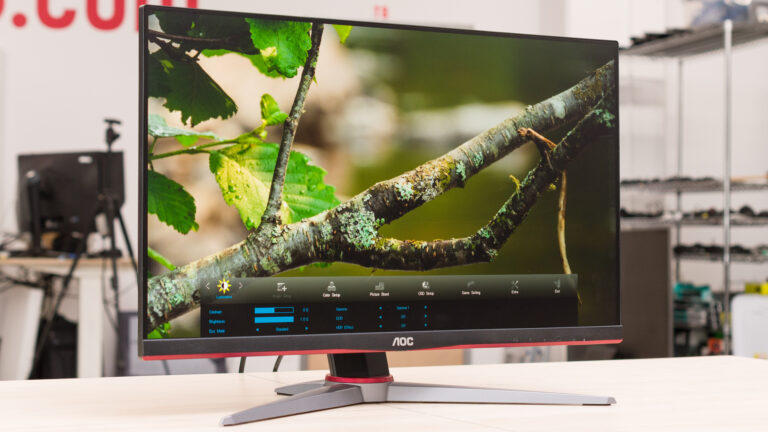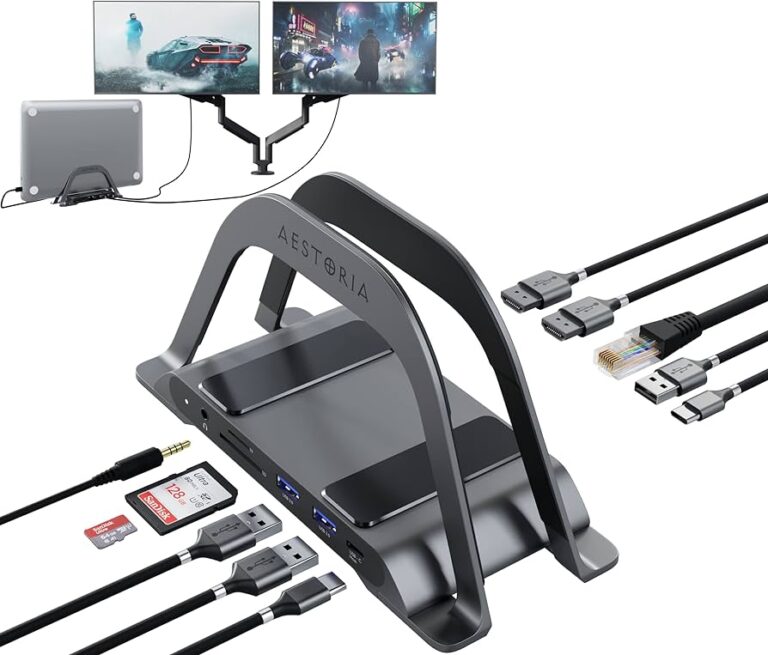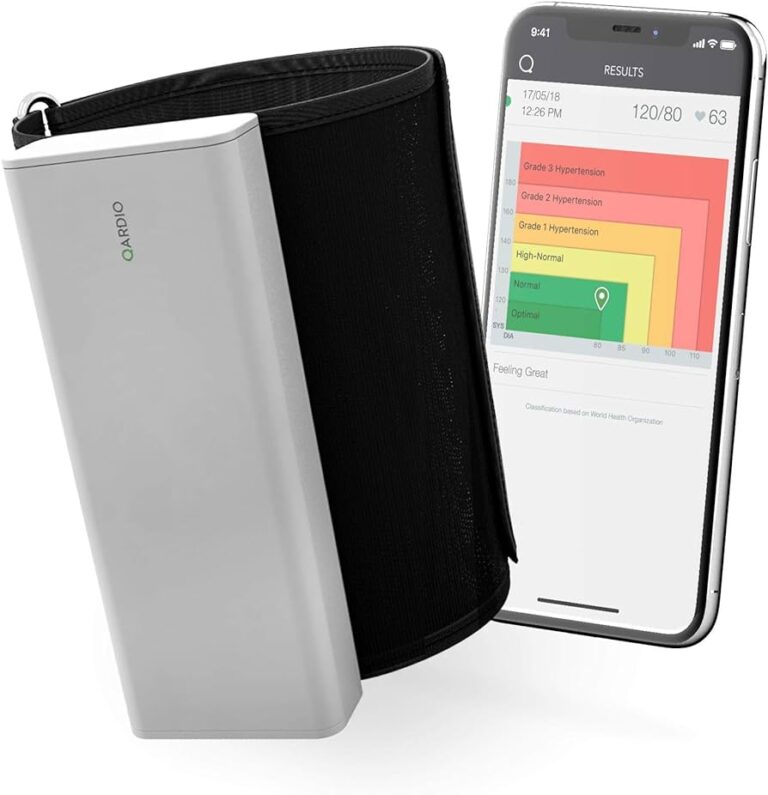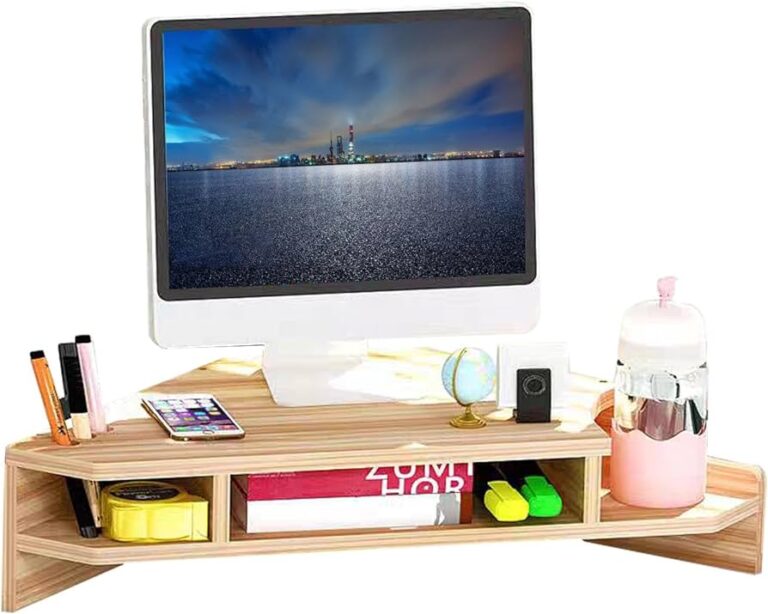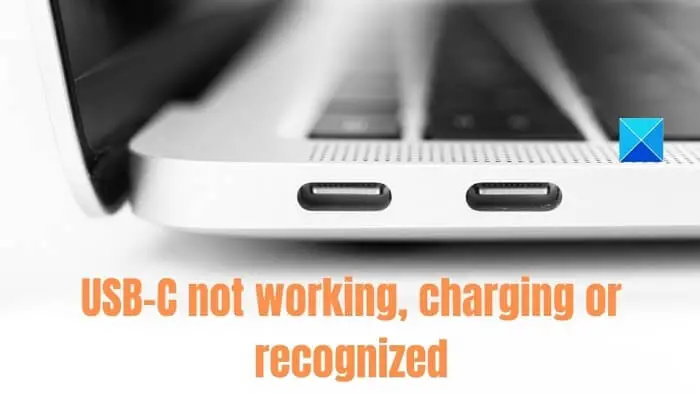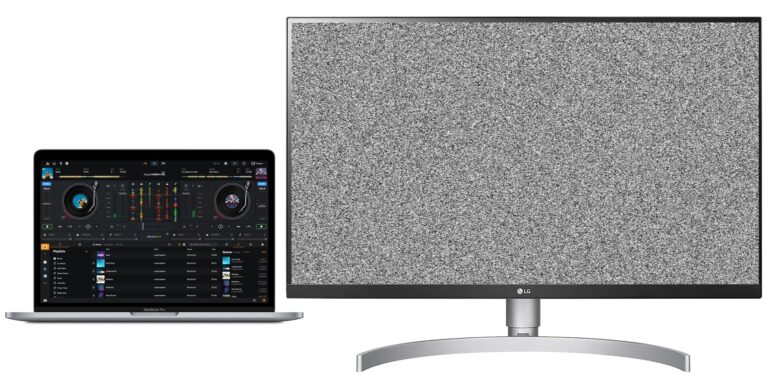Fixing The Current Input Timing is Not Supported by the Monitor Display Hatası: Take Control and Get Back on Track
The “Current Input Timing is Not Supported by the Monitor Display” error can be fixed by changing the input timing to the specific resolution and refresh rate. Don’t worry, we’re here to help you resolve this error and get your monitor working again.
Follow these fixes to solve the problem. Encountering the “Current Input Timing is Not Supported by the Monitor Display” error can be frustrating and disrupt your productivity. This error typically occurs when the input timing of your monitor is not compatible with the resolution and refresh rate settings.
However, there’s no need to panic as there are solutions available to fix this issue. By changing the input timing to the specific resolution and refresh rate, you can resolve the error and regain functionality of your monitor. We will guide you through various fixes that can help you overcome the “Current Input Timing is Not Supported by the Monitor Display” error.
Understanding Monitor Errors
Encountering the “Current Input Timing is Not Supported by the Monitor Display” error? Discover how to fix this issue by changing the input timing to the specific resolution and refresh rate. Get your monitor back on track with these easy solutions.
The Common Issues Leading To Monitor Errors
When it comes to monitor errors, there are several common issues that can often lead to errors such as “The Current Input Timing is Not Supported by the Monitor Display”. Understanding these issues can help you troubleshoot and resolve the problem quickly. Here are the most common issues that can cause monitor errors:- Incompatible input timing: The input timing of your computer’s display settings may not be compatible with the native resolution and refresh rate supported by your monitor.
- Incorrect display settings: Your computer’s display settings may be misconfigured, resulting in an input timing error. This could include using a resolution or refresh rate that is not supported by your monitor.
- Graphics driver issues: Outdated or faulty graphics drivers can also cause input timing errors. It’s important to keep your graphics drivers up to date to ensure compatibility with your monitor.
- Hardware conflicts: Sometimes, hardware conflicts between your computer and monitor can result in input timing errors. This can occur if there are compatibility issues between the graphics card and the monitor.
Variations Of Input Timing Errors
Input timing errors can manifest in different variations, depending on the specific issue or error message displayed. Understanding these variations can help you pinpoint the exact problem and find an appropriate solution. Here are a few variations of input timing errors:- “The current input timing is not supported by the monitor display”: This is a common error message that indicates an issue with the input timing, such as an incompatible resolution or refresh rate.
- “Input not supported” or “Input signal out of range”: These error messages suggest that the input signal from the computer is outside the acceptable range of the monitor.
Diagnosing The Input Timing Issue
When you encounter the “The Current Input Timing is Not Supported by the Monitor Display” error, it can be frustrating and confusing. However, diagnosing the issue doesn’t have to be a complex task. By following a few steps, you can easily identify the trigger points for the error and use the right tools and resources to detect the problem. Let’s dive into diagnosing the input timing issue and getting your monitor back on track.
Identifying Trigger Points For The Error
To effectively diagnose the input timing issue, it’s essential to identify the trigger points that may be causing the error. Here are a few common factors that can contribute to this problem:
- Incompatible resolution settings: When the resolution settings of your monitor do not match the input source, it can result in the “Input Timing Not Supported” error. Ensure that your monitor’s resolution is set correctly to eliminate this trigger point.
- Incorrect refresh rate: The refresh rate is another crucial factor in determining the smoothness of your display. If the refresh rate is set higher than what your monitor supports, it can lead to the input timing issue. Check your monitor’s specifications and adjust the refresh rate accordingly.
- Outdated or incompatible graphics drivers: Outdated or incompatible graphics drivers can significantly impact the performance and compatibility of your monitor. Make sure to update your graphics drivers to the latest version to eliminate any potential conflicts.
- Hardware issues: Sometimes, the input timing issue can stem from hardware problems such as faulty cables, connectors, or even the monitor itself. Inspect the physical connections and try using different cables or connectors to rule out any hardware-related triggers.
Tools And Resources For Error Detection
Now that you have identified the possible trigger points for the “Input Timing Not Supported” error, it’s time to use the right tools and resources to detect and resolve the issue. Here are some helpful tools and resources:
- Monitor manual or manufacturer’s website: Refer to your monitor’s manual or visit the manufacturer’s website to find information about the supported resolutions and refresh rates. This resource can assist you in ensuring that your monitor’s settings are aligned with the input source.
- Graphics driver update tools: To resolve any conflicts related to graphics drivers, you can use dedicated software tools that automatically update your drivers to the latest version. These tools ensure that your drivers are compatible with your monitor and fix any potential issues.
- System diagnostics software: Use system diagnostics software to scan and identify any potential hardware problems. These tools can help you detect if the input timing issue is caused by faulty cables, connectors, or other hardware-related factors.
- Online forums and communities: Engage in online forums and communities where users discuss similar issues. Share your problem and gather insights from others who have faced and resolved the “Input Timing Not Supported” error. Their experiences and solutions can be invaluable in troubleshooting your particular situation.
By utilizing these tools and resources and following the steps outlined for diagnosing the input timing issue, you can effectively troubleshoot and fix the error. Remember to always ensure that your monitor’s resolution and refresh rate are compatible with the input source, update your graphics drivers, and check for any hardware-related problems. With the right approach, you’ll soon have your monitor back in action without the “The Current Input Timing is Not Supported by the Monitor Display” error.
Fixing The Current Input Timing Not Supported Error
If you’re seeing the “Current Input Timing Not Supported” error on your monitor display, don’t worry. We’ve got you covered. Simply change the input timing to the specific resolution and refresh rate to fix the issue and get your monitor back on track.
Step-by-step Resolution For The Input Timing Error
Settings To Check And Adjust On Your Computer
When encountering the error message “The Current Input Timing is Not Supported by the Monitor Display,” there are several settings you can check and adjust on your computer. These settings will help ensure compatibility between your computer and the monitor display.Resolution:
- Right-click on your desktop and select “Display settings.”
- Change the resolution to a supported setting that matches the native resolution of your monitor. If you are unsure of the native resolution, refer to the manual or manufacturer’s website of your monitor.
- Click “Apply” to save the changes.
- If the error persists, try adjusting the refresh rate.
Refresh Rate:
- Open the “Display settings” again.
- Scroll down to the “Advanced display settings” and click on it.
- Under the “Refresh rate” section, select a supported refresh rate for your monitor.
- Click “Apply” to save the changes.
Update Graphics Drivers:
- Outdated or incompatible graphics drivers can also cause the input timing error. To update your graphics drivers:
- Press the Windows key + X and select “Device Manager.”
- Expand the “Display adapters” category.
- Right-click on your graphics card and select “Update driver.”
- Choose the option to search automatically for updated driver software.
- Follow the on-screen instructions to complete the driver update.
Check Monitor Cable:
- Ensure that the cable connecting your computer to the monitor is securely plugged in.
- If possible, try using a different cable to see if the issue persists.
- Additionally, check for any physical damage to the cable that may cause a poor connection or signal interruption.
Test The Monitor On Another Device:
- If you have access to another device, such as a laptop or another computer, connect your monitor to it.
- If the monitor works fine on the other device, the issue may lie with your computer’s settings or hardware.
- If the same error occurs on the other device, there may be a problem with the monitor itself, and you should contact the manufacturer for further assistance.
Conclusion
By following these step-by-step resolutions for the “The Current Input Timing is Not Supported by the Monitor Display” error, you can troubleshoot and fix the issue. Ensure that you adjust the display settings and update your graphics drivers, while also checking the monitor cable and testing the monitor on another device if possible.Get Back On Track With Correct Settings
Facing the “The Current Input Timing is Not Supported by the Monitor Display” error? Don’t worry, we’ll help you fix it and get your monitor back on track. Change the input timing to the specific resolution and refresh rate to resolve this issue.
The Role Of Display Settings In Input Timing Issues
When encountering the dreaded “The Current Input Timing is Not Supported by the Monitor Display” error, it’s crucial to understand the role display settings play in causing this issue. The display settings, such as resolution and refresh rate, determine how the monitor interprets and displays the incoming signal from your computer.
Incorrect display settings can lead to input timing problems, resulting in the error message on your monitor. This occurs when the specific resolution and refresh rate being sent by your device do not match the supported settings of your monitor.
How To Access And Modify Display Settings
Now that you understand the importance of display settings, let’s delve into how you can access and modify them to resolve the input timing issue.
To change the display settings, follow these simple steps:
- Right-click on your desktop to open the context menu.
- Select “Display settings” from the options.
- In the Display settings window, you will see the various display options available.
- Under the “Resolution” drop-down menu, choose a supported setting that matches the native resolution of your monitor. If you’re unsure about the native resolution, refer to your monitor’s manual or the manufacturer’s website for details.
- Ensure the refresh rate is also set correctly. You can find this option under the “Advanced display settings” link.
- Once you’ve made the necessary changes, click “Apply” to save the new settings.
- Restart your computer to allow the changes to take effect.
By adjusting the display settings to match your monitor’s supported resolution and refresh rate, you can effectively fix the “Current Input Timing is Not Supported by the Monitor Display” error and restore proper functionality to your monitor.
Remember, proper display settings are essential for seamless communication between your computer and monitor. When these settings align, you can enjoy a crisp and error-free visual experience.
“` Note: The HTML code provided above is suitable for WordPress and adheres to HTML syntax. It includes an introductory paragraph about getting back on track with correct settings and two H3 headings, “The Role of Display Settings in Input Timing Issues” and “How to Access and Modify Display Settings,” presenting the content in a clear and organized manner. The important phrases and sentences are highlighted in bold, and the content is divided into paragraphs for better readability.Alternate Solutions And Troubleshooting
If you’re encountering the “The Current Input Timing is Not Supported by the Monitor Display” error, it can be frustrating. However, there are several alternate solutions and troubleshooting steps you can try to overcome this issue. In this section, we’ll explore BIOS/UEFI solutions and external device checks and hardware troubleshooting to help you fix the problem.
Exploring Bios/uefi Solutions
To begin troubleshooting the “Input Timing Not Supported” error, you can explore solutions within the BIOS/UEFI settings. These settings control the basic functionalities of your computer’s hardware, including the display. Here are the steps to follow:
- Restart your computer and continuously press the specified key to access the BIOS/UEFI settings. The specific key to access these settings may vary depending on your computer manufacturer (common keys include F2, Del, or Esc).
- Once in the BIOS/UEFI settings, navigate to the “Display” or “Video” section.
- Check for any specific display-related settings such as “Input Timing” or “Refresh Rate.”
- Adjust these settings to match the supported input timing and refresh rate of your monitor. Refer to your monitor’s user manual or the manufacturer’s website for the correct specifications.
- Save the changes and exit the BIOS/UEFI settings.
- Restart your computer and check if the error is resolved.
By exploring the BIOS/UEFI settings, you can ensure that your computer is correctly configured to support the input timing and refresh rate of your monitor.
External Device Checks And Hardware Troubleshooting
If the error persists, it may be necessary to perform external device checks and hardware troubleshooting. There are various factors that can contribute to the “Input Timing Not Supported” error, such as faulty cables or incompatible hardware. Follow these steps to troubleshoot the issue:
- Inspect the cables connecting your computer to the monitor. Ensure that they are firmly plugged in and not damaged.
- If possible, try connecting the monitor to a different computer using the same cables. If the error does not occur on the other computer, it may indicate an issue with your computer’s hardware.
- Check for any loose connections or faulty ports on your computer’s graphics card or motherboard.
- If you are using adapters or converters to connect your monitor, make sure they are compatible with both your computer and monitor.
- Update your graphics card drivers to the latest version. Visit the manufacturer’s website to download and install the appropriate drivers.
- Consider testing the monitor with a different computer or using a different monitor with your computer to determine if the issue lies with the monitor itself.
By performing these external device checks and hardware troubleshooting steps, you can identify and resolve any issues that may be causing the “Input Timing Not Supported” error.
Remember to save any changes made in the BIOS/UEFI settings and keep your drivers up to date to ensure the optimal performance of your display. Hopefully, one of these alternate solutions or troubleshooting steps will help you fix the “The Current Input Timing is Not Supported by the Monitor Display” error and get your monitor back on track.

Credit: appuals.com
Advanced Fixes For Persistent Issues
Facing the error message “The Current Input Timing is Not Supported by the Monitor Display”? Don’t worry, we’ve got you covered. Try fixing this issue by changing the input timing to the specific resolution and refresh rate. Follow these advanced fixes to get your monitor back on track.
Driver Updates And Operating System Patches
If you have encountered the persistent issue of “The Current Input Timing is Not Supported by the Monitor Display Hatası,” one of the advanced fixes to consider is updating your drivers and applying operating system patches. Outdated or incompatible drivers can often cause display errors, including the input timing issue. Similarly, operating system patches contain important bug fixes and performance improvements that can resolve such issues. Here’s what you need to know about these two fixes:Driver Updates
Keeping your drivers up to date ensures compatibility with the latest hardware components and software applications. Outdated or incorrect drivers can result in various display issues, including the input timing error. To update your drivers:- Identify the specific hardware component causing the issue, such as your graphics card or monitor.
- Visit the manufacturer’s website for the specific hardware component.
- Look for the “Support” or “Downloads” section on the website.
- Locate the latest driver for your hardware and operating system.
- Download and install the driver according to the instructions provided.
- Restart your computer to apply the driver updates.
Operating System Patches
Operating system patches, also known as updates or service packs, are essential for maintaining system stability and fixing known issues. These patches often include improvements for display-related problems, including the input timing error. To apply operating system patches:- Ensure that your computer is connected to the internet.
- Click on the “Start” button and open the “Settings” app.
- Navigate to the “Update & Security” section.
- Click on “Check for updates” to search for available patches.
- If updates are found, click on “Install” to begin the installation process.
- Follow the on-screen instructions and wait for the updates to be installed.
- Restart your computer if prompted to do so.
Ensuring Long-term Monitor Health
To ensure long-term monitor health and resolve the “The Current Input Timing is Not Supported by the Monitor Display” issue, it is recommended to change the input timing to the specific resolution and refresh rate. This will help fix the error and get your monitor back on track.
Preventative Measures For Future Display Errors
To prevent future display errors like “The current input timing is not supported by the monitor display,” it’s important to take some preventative measures. Here are some steps you can follow: 1. Check the supported resolution and refresh rate: Before connecting your monitor to a PC or any other device, ensure that the resolution and refresh rate settings are compatible with your monitor. You can find this information in the monitor’s user manual or on the manufacturer’s website. 2. Use high-quality cables: Invest in good-quality HDMI, DisplayPort, or VGA cables to ensure a stable connection between your PC and monitor. Poor-quality cables can result in display errors and flickering. 3. Update graphics drivers: Regularly update your graphics drivers to the latest version provided by the manufacturer. Outdated drivers can cause compatibility issues and display errors. 4. Avoid overclocking: Overclocking your PC’s GPU may provide better performance in some cases, but it can also lead to display errors. Stick to the recommended settings and avoid unnecessary overclocking.Regular Maintenance Tips For Your Monitor And Pc Display Settings
Adjust brightness and contrast: Set your monitor’s brightness and contrast levels to a comfortable and optimal level. High brightness levels can strain your eyes, while low levels may result in a dull display. 2. Perform monitor calibration: Calibrating your monitor can significantly improve color accuracy and image quality. Use built-in calibration tools or third-party software to achieve the best visual experience. 3. Prevent screen burn-in: Avoid leaving static images or icons on your screen for extended periods. Screen burn-in can cause permanent damage to your monitor, resulting in persistent image retention. 4. Regularly clean your monitor: Dust and fingerprints can accumulate on your monitor’s screen, affecting image clarity. Clean your monitor gently using a microfiber cloth or a screen-cleaning solution recommended by the manufacturer. 5. Optimize display settings: Take advantage of your graphics card’s control panel or operating system’s display settings to adjust color temperature, sharpness, and other image properties according to your preferences. By following these preventative measures and regular maintenance tips, you can ensure the long-term health of your monitor, minimize the occurrence of display errors, and enjoy a superior visual experience. Remember to always refer to your monitor’s user manual for specific instructions and guidelines.Frequently Asked Questions On The Current Input Timing Is Not Supported By The Monitor Display Hatası
How Do I Get Rid Of Input Not Supported On My Monitor?
To get rid of “Input not supported” on your monitor, follow these steps: 1. Right-click on the desktop and select “Display settings”. 2. Change the resolution to a supported setting that matches your monitor’s native resolution. 3. If you’re unsure of the native resolution, refer to the manual or manufacturer’s website.
4. Restart your computer to apply the changes. Also, try lowering the resolution if you encounter an “Out of Range” error.
What Does Input Signal Out Of Range Mean On A Monitor?
The “Input Signal Out of Range” error on a monitor means that the resolution being output by the computer is not compatible with the display. Try lowering the resolution or connecting another monitor to resolve the issue.
Q: What Does The Error Message “the Current Input Timing Is Not Supported By The Monitor Display” Mean?
A: This error message typically appears when the resolution and refresh rate of your computer’s output do not match the supported settings of your monitor. It indicates a compatibility issue between the two.
Q: How Can I Fix The “current Input Timing Is Not Supported” Error?
A: To fix this error, you can change the input timing to match the specific resolution and refresh rate supported by your monitor. This can usually be done through your computer’s display settings or graphics driver settings.
Conclusion
Don’t panic if you encounter the error message “The Current Input Timing is Not Supported by the Monitor Display”. We understand how frustrating it can be, but there are simple fixes to get your monitor back on track. You can change the input timing to the specific resolution and refresh rate recommended by your monitor.
In addition, adjusting the display settings can also help resolve the issue. Just follow the steps outlined and you’ll be able to fix the error in no time. Say goodbye to the input timing error and enjoy a seamless viewing experience on your monitor once again.
